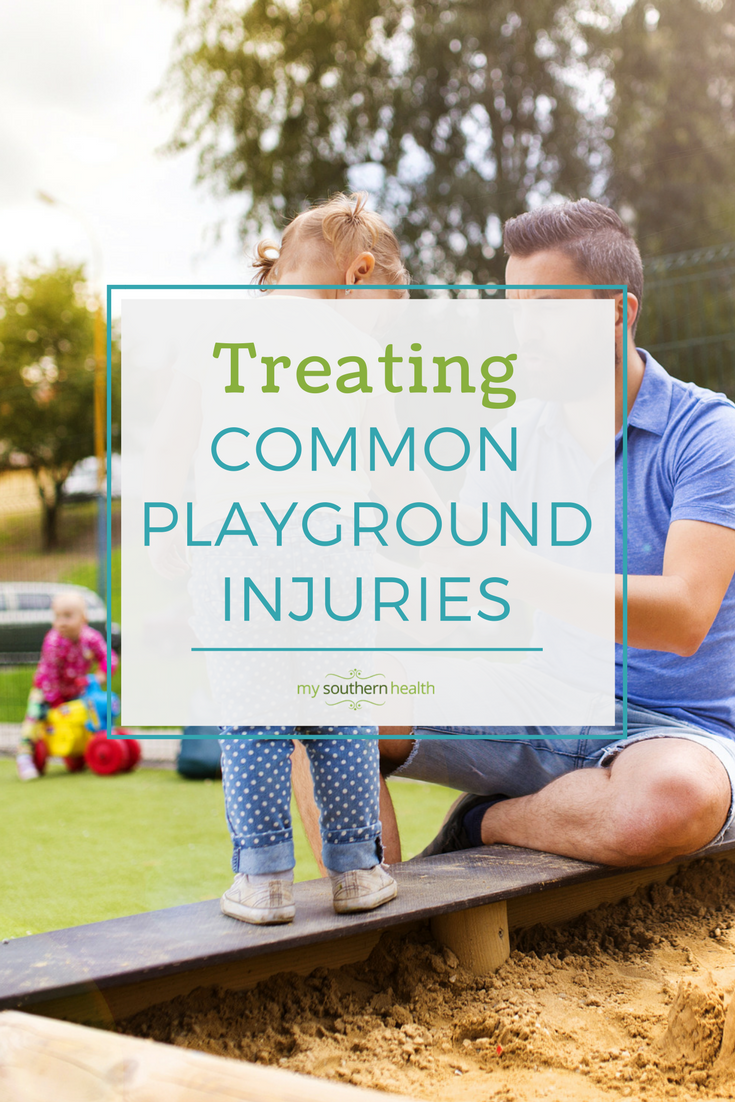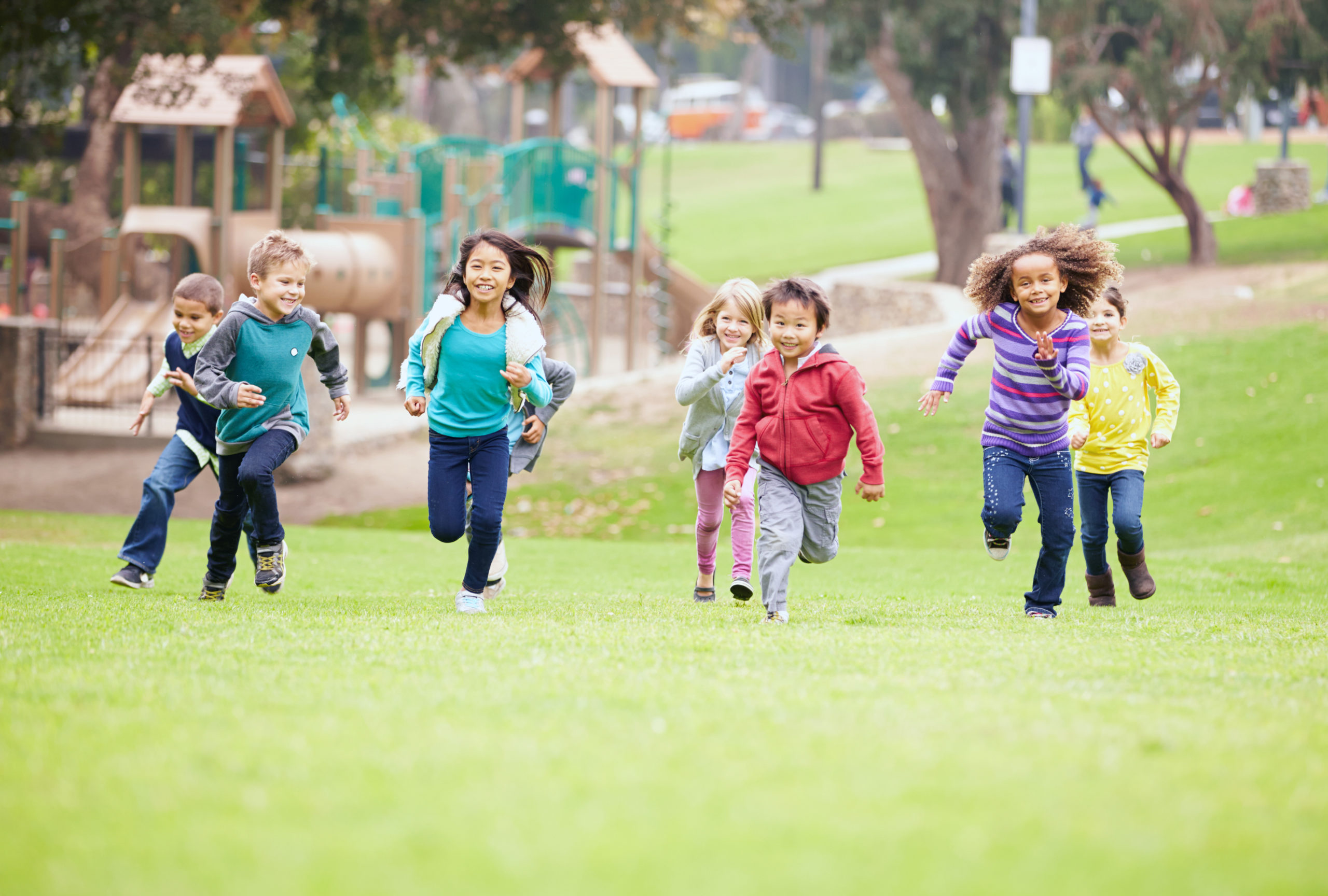Accidents are bound to happen. Here are tips for dealing with common playground injuries and knowing when to seek help.
I love taking my children to the playground. It allows them to be outdoors, burn off energy, build confidence in their motor skills and get creative. That being said, we almost never come home unscathed. Thankfully so far our injuries have been pretty minor – a scrape here, a minor fall there – and I hope it stays as such. But playground safety is so important, and parents should know what to do in case more major injuries occur.
Though parks are built to provide playground safety for kids, approximately 150,000 to 200,000 emergency room visits happen yearly related to injuries occurring on playgrounds. Most occur in children between the ages of 5 and 9, when the daredevil in your child really blossoms.
Tips for common playground injuries
Splinters: Try removing these with a piece of Scotch tape or, if that is not possible, a sterilized needle or pair of tweezers. Usually the more superficial splinters will work their way out even if you are not able to remove them. Be on the lookout for redness, swelling or pain in the area surrounding the injury, though, as that can be a sign of infection.
Oral trauma: If a primary (baby) tooth has been knocked out, it does not need to be reimplanted. However if a secondary (permanent) tooth has been knocked out, this needs to be seen by a dentist immediately. In the meantime, you can rinse it clean under some water and replace it in the mouth, asking your child to hold it in place by biting on a towel, or place it in some milk on your way to the dentist.
Bloody noses: It’s like you can see it in slow motion, when your child runs past the swings without looking and takes one to the nose, and comes to you with a mess of blood running through their hands. Lean them forward and apply pressure for at least 5 minutes (no peeking until at least 5 minutes has elapsed). This will usually do the trick but if you have persistent bleeding even after holding pressure for 20 minutes, your child needs to see a doctor.
Sprains: This occurs when one of the ligaments that holds bones together gets stretched too far or torn. Sprains occur commonly to ankles and wrists. Symptoms can include swelling, pain and bruising. Think RICE to remember how to treat this: rest, ice, compress, elevate. You can also give ibuprofen (Motrin or Advil) for pain control. For more severe sprains, a splint can be helpful as well. If your child is unable to bear weight on the injured spot, you should speak with your doctor to make sure its not a more serious injury.
Broken bones: Most of these occur when children fall from equipment or onto on outstretched hand. They can also occur when young children get their legs caught under them going down spiral slides. Symptoms of a broken bone can include notable swelling, significant pain and deformity; all should be evaluated by a doctor. But if there is numbness, decreased circulation to the injured area, or you can see the bone, that evaluation needs to occur as soon as possible. In the meantime, remove clothing over the affected area, place some ice on the area and use whatever you have to immobilize it (like a rolled-up magazine).
Head injuries: These are a little tricky because what child hasn’t hurt their head on the playground? Most will just lead to some swelling, bruising and tenderness. But if your child has fallen from a tall height, has bouts of vomiting, confusion, or changes in their speech or vision, this can indicate a concussion or more serious injury and should be evaluated by a doctor.
Even though they are not injuries, I feel it would be remiss not to mention two other things, given that it is spring in Tennessee. The first is to put bug spray on your kids before going out and do a tick check once inside again, especially in places like their hair, groin and armpits. The second suggestion is to go outside in the morning or late afternoon to avoid the hottest times of day, take plenty of water (and encourage them to take breaks to actually drink it) and check slides and other metal equipment before playing on it to avoid potential burns.
These tips should help if – or rather, when – you find yourself at the playground with a hurt child.
Maya Neeley, M.D., is a board-certified pediatrician specializing in hospital medicine at Monroe Carell Jr. Children’s Hospital at Vanderbilt. She adores her husband and four young boys and loves spending time with family and good friends. As a child, she always dreamed of becoming a children’s book illustrator but for now she just dreams of getting a good night’s sleep.


